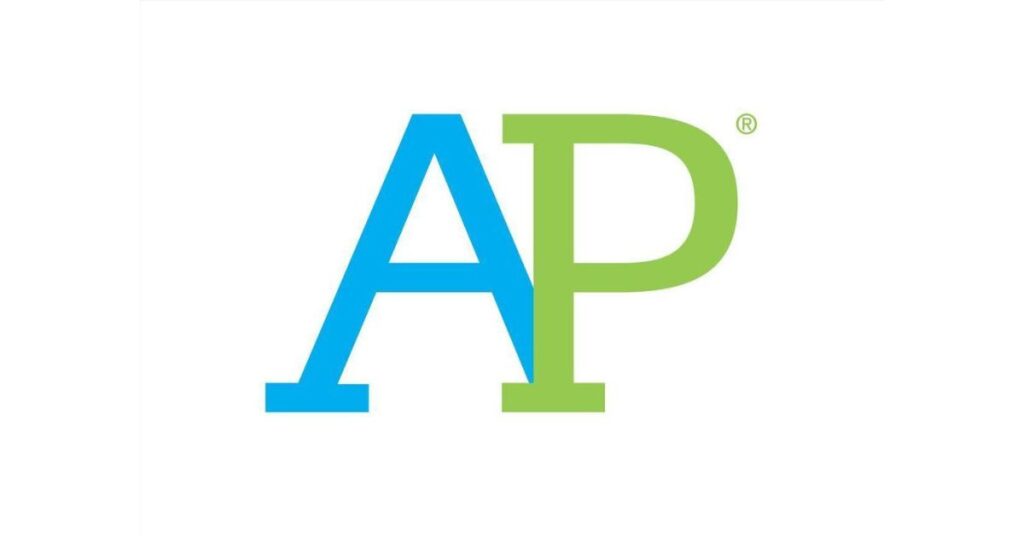Annually, 80 percent of California community college students say they aspire to get a bachelor’s degree. However, only 13 percent will succeed within six years. It is possible to transfer from community college in one year, but it requires immense dedication and motivation toward your educational goals.
In this article, we will outline the necessary steps and transfer requirements needed to transfer from community college to university in one year. So whether you are currently attending community college or just starting out, read on for tips and advice that will make your transfer process a breeze!
Step 1: Is It Possible to Transfer from Community College in One Year?
Students should evaluate their current predicament and determine if transferring from community college to university in one year is even feasible.
It is not easy to transfer from a community college in one year, so take the time to audit your coursework and plan your journey, you will thank yourself in the long run.
Evaluate Transcripts
One component to determine if it is possible to transfer from community college in one year is to evaluate your transcripts. A transcript is a document that shows the classes and grades a student has received in each class. It shows all the coursework you took at any previous institution.
If you attended multiple institutions, then you will have to submit official transcript requests from every institution you attended, even if you only took one course there. After reviewing your transcript, you should proceed by researching the community colleges in your area.
A good way to determine if it is possible to transfer from community college in one year is possible is by looking at your transcripts and identifying which of your credits will transfer over.
Questions Students Ask: Are “W” WITHDRAWALS ON TRANSCRIPT BAD FOR ADMISSIONS CHANCES?
Assess Course Equivalency at Local Community College
A good way to determine if it is possible to transfer from community college in one year is by looking at your transcripts and identifying which of your credits will transfer over.
Research local community colleges to determine which one you will enroll in. Consider factors like size, location, distance, and access to transportation when making the decision to enroll.
After selecting an institution, identify the number of credits you have already accumulated before stepping foot on campus.
Transferring from community college in one year is entirely dependent upon whether or not you do this step correctly. When you carefully and meticulously sit down with a counselor to assess your course and college credit you are essentially creating a pathway by which you will use to transfer from community college in one year.
Credit for Advanced Placement (AP) and International Baccalaureate (IB) Exams
Other students already accumulate college credit while enrolled in high school via standardized tests like Advanced Placement (AP) or through Dual Enrollment programs offered by their high school.
Every community college has a list that shows the number of credits they will award depending on the AP or IB score they received.

For dual enrollment students, you are already receiving transferable credit because you were effectively enrolled in a college course (sanctioned by an accredited community college) while technically still in high school.
Dual enrollment credit is an excellent way to ensure you can transfer from community college in one year and remain within a realistic semester-by-semester credit load.
Consider Personal Circumstances
The decision to transfer from community college to university after one year is a big one that should not be taken lightly. Arguably the most important thing to consider is your personal circumstances.
Students need to consider their personal life circumstances and whether or not they are able to commit to giving 100 percent in all of their classes while guaranteeing they will have enough credits to transfer.
If students cannot commit to this, then it is not worth transferring because their application will not be competitive. It is hard to juggle school, work, and family responsibilities but it is made even worse by the academic rigor 16 units will create for you.

Good grades are the most important thing when applying to transfer from community college in one year. So if you are working forty-five hours a week or have other responsibilities that demand your time and focus, you should reconsider transferring in one year.
I mention personal circumstances because students can overwhelm themselves with tasks and responsibilities and that can hurt the way they perform in classes.
It is important to weigh all options before making a decision, and in this case, taking an extra year at community college may be the best option.
Step 2: Pick a Major
The next step in transferring from community college to university in one year is to pick a major.
It is important to declare a major that you enjoy because you will base your entire course schedule on completing the prerequisites and core classes for that major which will then be applied to the university you intend to transfer to.
Failure to pick a major that you like and enjoy will complicate the process of transferring in one year because you will base your entire course schedule on the decision.
A primary reason students fall short in transferring from community college to university in one year is their decision to switch majors, complicating the delicately crafted course schedule.
If you are not sure what you want to study, take some time to explore your options. Talk to your advisors, look at the course catalogs, and see what interests you.
Transfer from community college in one year by taking your major selection seriously and sticking to the game plan. It will be difficult to transfer from community college to university in one year if you switch majors consistently.

Once you have decided on a major, make sure to check that the university you are transferring to offers that program and determine the courses that need to be completed in order to apply as a transfer applicant.
Once you have all of that information, you can start planning your course schedule. With careful planning and a little bit of effort, you can successfully transfer from community college in one year.
Step 3: Transfer from Community College in One Year with Course Planning
Students who intend to transfer from a community college to a university often have the goal of doing so within one year. While this is an admirable goal, it can be difficult to achieve without careful course planning. Transfer from community college in one year through careful, diligent, and informative course planning.’
Makes sure you are utilizing websites like ASSIST ORG, which is the official articulation database for the California Community College, University of California, and California State University systems. In order to transfer from community college in one year, students have to get comfortable with what are known as articulation agreements.
Locate Articulation Agreements
One important factor in successfully transferring within a year is ensuring that the courses you take at the community college will satisfy the requirements of the university you plan to attend.
Recommended Reading: Transferring with ASSIST | Ultimate Guide + Strategies
This can be accomplished by completing an articulation agreement. The articulation agreement is the most important document you will use in navigating your transfer journey.
Articulation agreements are agreements between community colleges and universities that outline which courses will be accepted for credit at the university.

By completing an articulation agreement, students can be sure that they are taking the courses needed to complete their degree in a timely manner. Articulation agreements vary amongst many community colleges and are heavily dictated by the location and partnership the institution has with local universities.
However, in states like California and Florida, there are widespread articulation agreements that universalize the process and guarantee the student receives the transfer credits they rightfully earned.
Without an articulation agreement, students may find that they need to complete additional coursework because they failed to enroll in one of the classes that are required for their major by the transfer institution. Transfer agreements are critical for incoming students because it depicts the transfer credits you receive at your new school. To transfer after one year, you must become an expert in
This will inevitably prolong your time at community college and extend your time to graduation. As such, articulation agreements are an important tool for students who wish to transfer within one year.
Using ASSIST Org (For California Students Only)
If you are enrolled at a California Community College, then you can find all of the articulation agreements on ASSIST.org. Some private colleges are also available on ASSIST org but it is limited to only California institutions.

ASSIST is the official repository of articulation for the three systems of higher education in California (the University of California (UC), the California State University (CSU), and the California Community Colleges (CCC).
ASSIST org will display both general education courses (i.e., courses that count for unit credit that may not be specific to your major) and required major courses (i.e., courses that are needed for your major to even submit an application for transfer admission).
Read: Ultimate Guide to Transferring with ASSIST
Identify Unit Requirements
The next step in course planning is making sure you will meet the unit requirements for transferring. Transferring credits is one of the more difficult portions of the process and requires delicate handling because failure to do so will cost you both time and money.
Every four-year college requires community college students to complete a certain number of units before they can submit an application and be considered for enrollment. Enrolling in two different community colleges can be advantageous in the event you were unable to secure a spot for a course that is required for your major.
At the very least, nearly every four-year college expects students to have received adequate general education credits and have completed the basic courses for their declared major.
In California, 60 semester units are enough to transfer with junior-level standing (i.e., coming in as a recognized junior) and meet the requirements for receiving an associate’s degree.
If you plan on transferring in one year, then you will have to take a minimum of 12 units which grants you full-time student status.
Financial aid implications are also dependent upon keeping your full-time student status so if you fall below 12 units and depend on financial aid then your financial aid award could be placed in jeopardy.
It is difficult to transfer in one year by just taking 12 units, however, and most students will have to take upwards of 16 to 18 units to meet the required threshold to transfer in one year.
The number of units you will have to take on a semester or quarterly basis is directly attributed to the number of college credits you accumulated before enrolling at community college.
In other words, if you did well on some AP scores then you will have credit that is already applied and can thus eliminate the need to maybe take that extra class in the spring semester.
Speak with the Academic Advisor
Schedule an appointment with your community college counselor to make sure you are on the correct path. Counselors at community colleges are specifically trained in developing educational plans that allow students to transfer seamlessly to a four-year program.
Community college counselors are experts in the field of transferring and it is best to develop a relationship with your local community college counselor to make sure you have another set of eyes watching over you.
The academic advisors will walk you through the
- Articulation agreement
- Evaluate your transcripts to determine community college credits,
- And curate a schedule that will ensure you are eligible to transfer within one year to a four-year school and receive a bachelor’s degree.
As a result, it is essential that transfer students speak with their academic advisors about their plans to transfer. By doing so, you can ensure that you are taking the necessary steps to achieve your academic goals and successfully transfer after one year. It may also be advantageous to reach out to the counselors at the four-year school you plan to transfer to.

You can introduce yourself to them and inform them of your intentions of transferring to their institution come the next school year. It is a great way to learn about your potential new school and identify the college life you expect to have at your new school.
You can also ask representatives questions about the requirements for a bachelor’s degree or how many credits are needed for an associate degree.
Some institutions will guarantee your admissions process if you successfully completed any associate’s degree programs that are offered at most community colleges.
Several community colleges and universities also work with four-year colleges and universities to support students with financial aid opportunities and information about how to save money throughout the process.
Merit scholarships are available for transfer students, but I will say that the number of scholarship opportunities for transfer students is significantly lower than the undergraduate admissions process
Questions Students Ask: Are “W” WITHDRAWALS ON TRANSCRIPT BAD FOR ADMISSIONS CHANCES?
Step 4: Course Enrollment
After you created your schedule and planned out all of the courses you need to take, it is time to focus on performing well.
Most institutions have a GPA and unit requirement in order to transfer so falling below those metrics will rule out your eligibility for admission.
Transfer from Community College in One Year by Taking Summer Classes
In the vast majority of circumstances, students will have to take summer classes in order to transfer within one year.
This is because transferring from community college to university in one year requires a certain number of units, and two semesters’ worth of instruction is likely not enough to meet the minimum required.
As such, taking summer classes will give you peace of mind in knowing that you will meet the minimum unit requirements and can alleviate stress in the fall or spring semester by having to take one less class.

In turn, you will have more time to devote to classes which can increase the chances of receiving an excellent grade mark.
Taking Classes During Intersession Period
You should also look at enrolling during the period of Intercession, which typically runs through Winter Break. Many California Community Colleges offer Winter Session classes. Keep in mind that if you take a course during an intersession semester, you won’t have access to the same range of courses and class types. Major preparation courses are sometimes available, but they usually need the full semester to cover everything effectively.
Step 5: Begin the Transfer Application
Remember if you are planning to transfer from community college to university in one year, then you will have a quick turnaround from the time you graduate high school to when you submit applications.
For example, the University of California (UC) system has its transfer application period open from September 1 to November 30. The deadline to submit an application for transfer to UC is November 30th, which is at the conclusion of your fall semester.
Related: CSU Apply Tips | California State University Application
The transfer process ends with a completed application and these applications are extensive in the material and documentation required.
Research Dates & Deadlines
Make sure you are keeping track of the application deadlines for every institution you are applying to. Some university systems, like the UC, have a single resource and program whereby students can submit one application that will be used for consideration at all nine UC campuses (or at least the ones the student selected).

The last thing you want to have to happen after busting your behind for an entire year is to find out that you missed the deadline to submit your application so make sure you are keeping note of all the dates and deadlines for submitting your application.
Focus on Personal Statement
Your personal statement is one of the most important parts of your college application. It’s your chance to share your story and show who you are beyond your grades and test scores.
Admissions committees use personal statements to get to know you better and see if you’re a good fit for their school. When writing your personal statement, be honest and be yourself. Admissions officers can spot a false or fake essay from a mile away.
Use your personal statement to share something unique about yourself that isn’t apparent from the rest of your application. For example, if you have experienced personal struggles or adversity, this is an ideal place to share that information.
- You may want to note your journey to be eligible for transfer in one year as this is something most students do not come close to doing and demonstrates your dedication and commitment to the admissions committee.
- Mention how you took classes year-round and gave up the leisure and fun of Winter break to put yourself in the position to transfer to a university within one year.
- Don’t be afraid to take risks with your essay – admissions officers are looking for students who are creative and out-of-the-box thinkers.
Ultimately, your goal should be to write an essay that is authentic, thoughtful, and memorable. By setting some time apart to prepare and plan your personal statement, you can make sure it is honest and well-thought-out.
Step 6: Await Admission Decision
After completing the above steps there is nothing more you can do. The fate of your college journey is ultimately dictated by the admissions committee and whether or not they believe you will be an excellent fit into the university’s culture.
Some institutions will have you scheduled for an interview that is conducted by an admissions officer or alumni from the institution that lives in your area.

Don’t worry if the decision comes back and you were rejected. The beauty of trying to transfer from a community college in one year is that you are practically finished with everything in the event that a second year is needed.
Set your goals and aspirations on schools that you have a realistic chance of being accepted to and focus on your extracurricular activities if those are an area of weakness. Sit down with your academic advisor and determine the next steps in transferring to a four-year university.
Recommended Reading: WHEN DO UC DECISIONS COME OUT? UC APPLICATION TIMELINES, DATES & DEADLINES
Frequently Asked Questions (FAQ)
Is It Actually Possible to Transfer from Community College in One Year?
Yes, it is possible but it almost always requires the student to have AP, IB, or Dual Enrollment credit. It is just too difficult to transfer in one year without having earned any college credit in high school or through other means.
Dual Enrollment, AP exams, and IB tests are critical in securing college credit for students that can then be applied to the community college they enrolled in. that can be applied to community college.
Can I Enroll at Multiple Community Colleges at the Same Time?
Yes, you can enroll in two community colleges but you will be required to submit transcripts and standardized test scores to the individual registrar’s office.
It also complicates the process in terms of overwhelming students because they have to navigate two separate articulation agreements while making sure they are enrolled in the right course at the right community college.
Conclusion
So, you’ve completed all the steps and now it’s time to wait for the admission decision. Keep in mind that this process is out of your hands – the fate of your college journey is ultimately decided by the admissions committee.
If you’re lucky enough to be offered a spot at one of your top schools, congratulations! If not, don’t worry – there are plenty of other institutions out there that would love to have you as a student.
Remember to focus on your extracurricular activities if those are an area of weakness and sit down with your academic advisor to determine the next steps in transferring to a four-year university. Best of luck on your college journey!





